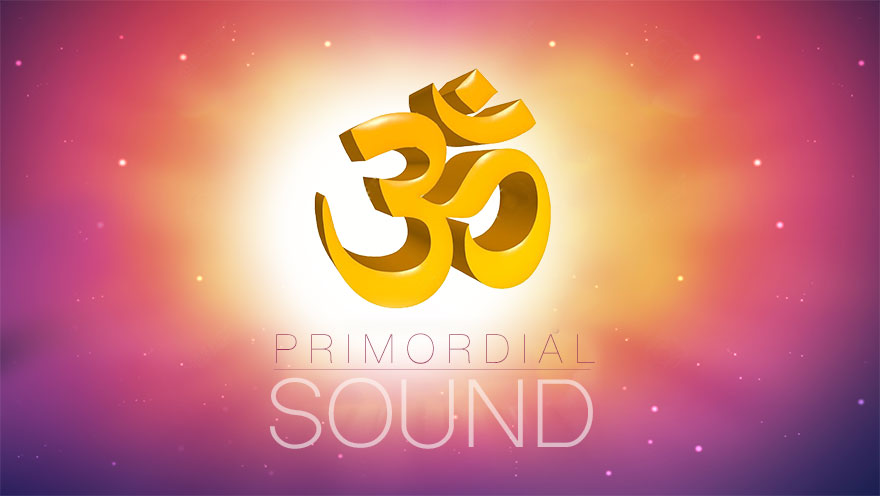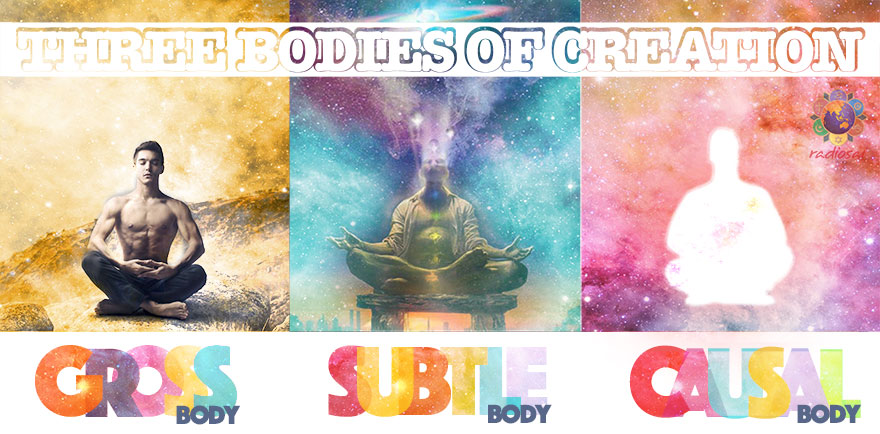|
|
| 'Like' us on Facebook | Follow us: |
Posted on: May 02, 2016
SATHYA SAI BABA ON
THE STHULA (GROSS), SUKSHMA (SUBTLE)
AND KARANA (CAUSAL) WORLDS
PART 1
by Ms. Christan Mackenzie
Gold Coast, Australia
Much of our knowledge of the sentient universe is derived from scientific and rational exploration. But such tools, we must admit, are inadequate to understand the subtle unseen world, which often forms the basis of creation. What is the relationship between the Creator and the created? What is our true nature? Are we the perishable body, or are we the one garbed in the body and mind? When an Avatar comes in our midst, apart from benefitting from the proximity of such a pure being, we also get to listen from Him some secrets about creation which are beyond the ken of reasoning.
Sadly some of the words of the Avatar and certain spiritual concepts are being misused by people with vested interests to give spiritual authenticity to their otherwise unacceptable, unfortunate actions. One such concept is that of the ‘Subtle Body’. Instead of blaming people for misusing these concepts, going to the very ‘Source’ and learning these concepts would be a rather fruitful effort. The article we wish to share with you today, is the brilliant compilation by Ms. Christan Mackenzie, where in, she gives us a complete idea of what Swami speaks about the nature of creation, the seen and the unseen world and its relation to the Supreme. Going through this article only makes us feel gratitude towards Bhagawan for having shared with us such esoteric wisdom. And of course, our sincere thanks to Ms. Mackenzie for bringing His words to us from various sources (Discourses over the years, interactions with devotees and Swami’s writings). For us Sai devotees there can be nothing more authentic on this theme, or any for that matter, than His words.
Om, the Primeval Sound Through All of This
God is said to be a word (Om) made in form.
- Divine Discourse, 31 Aug 2001
Om is the primeval sound, the sound caused by the vibrations of creation through the Emergent Will of the formless and attributeless Brahman (Divine Source/Self/God), and this sound is referred to as Sabda Brahman (divine transcendental sound).
- Divine Discourse, 06 Jun 1978, Bala Vikas Gurus Training Camp.
Om is termed the Pranava. The Pranava is also described as the embodiment of the eight forms of Aiswarya (divine wealth) and hence described as:
 |
Sabda Brahmamayi (Sound)
Characharamayi (Mobility and Immobility)
Jyothirmayi (Light)
Vangmayi (Speech)
Nityanandamayi (Eternal Bliss)
Paratparamayi (Supreme Majesty)
Mayamayi (Delusion)
Srimayi (Wealth)
- Divine Discourse, 31 Aug 2001, Prasanthi Nilayam
Shankara (Easwara) refers to the one who is endowed with all types of this Aiswarya (wealth). The types of wealth that we enjoy in the worldly sense are not what we mean by Aiswarya. Everything in the phenomenal world, every person, every bit of matter that we see, has this principle of Aiswarya in it. This Aiswarya is nothing other than Easwara. In other words, the entire phenomenal world is made up of Easwara. This has also been described as Sathamatra Chaitanya (Pure Consciousness). This principle of Chaitanya cannot be directly seen; it exists unseen. It is eternal, it is permanent, it is all pervasive.
This is the Aiswarya that permeates and fills this world. This is the very embodiment of Easwara Itself.
For this principle of Easwara there are two aspects. One is Saguna (attributeful) and Sakara (formful) and the other is Nirguna (attributeless) and Nirakara (formless). Associated with the mind and thoughts, and responding to the joys and sorrows, the pain and sufferings of human beings, various forms of Divinity have been visualised. These are the Saguna and Sakara aspects of Easwara
- Divine Discourse, 17 Feb 1985, Prasanthi Nilayam
'Ayam Atma Brahma' means that this very Atma is identical with Brahman or Divine. Atma is not something distinct from us. This Atma is present in everyone, in all living beings and in all things. That Atma is identical with Brahman and has an indestructible form. It is filled with sabda or sound. 'Om' is the ekaksharam Brahman.
- Summer Showers in Brindavan 1977, 151-157
Issuing from 'Om' are the words of the second line or ‘face’ of the Gayatri Mantra, ‘Bhur Bhuvah Suvaha’. These words individually represent the broad ‘worlds’ of Body, Mind and Spirit, and all their manifestations and energies - ‘formful’ (Sakara) and attributeful (Saguna) or formless (Nirakara) and attributeless (Nirguna) of the past, present and future. There is simply nothing in creation whatsoever that is not encompassed by these three mega-worlds, and the three worlds are all permeated with Atma or Divine Spirit.
The Pranava, constituted by the three sounds A+U+M, pervades the three worlds represented by the terms: Bhur, Bhuvah (which is above the Bhuloka) and Suvaha (the top-most of the three worlds). The three Vedas - Rig, Yajur and Sama have emanated from the Pranava. The three Vedas in their hymns glorify the Pranava. Thus, the Pranava is the all-pervading primordial sound.
- Summer Course Brindavan, 28 May 1991
The Story of Creation
Before creation of the ‘three worlds’, nothing existed in the universe. In the beginning, the sun, the moon, the stars, the earth, the sky, etc., did not exist. There was only pitch darkness all around. The combination of atoms resulted in the formation of hard matter of a very high density. As a result, a lot of heat was generated. Then all of a sudden, the hard matter exploded with a big bang into pieces and spread all over. This was the cause of creation. The sound that emanated when the big bang took place is known as ‘Pranava’ or Omkara, the primordial sound. This sound of Pranava is all pervasive. It originated from paramanu (minutest atom). 'There is nothing other than atom in this creation.' The primordial sound ‘Pranava’ is verily the Divinity, which is subtler than the subtlest and vaster than the vastest. It is all pervasive and stands as the eternal witness. It is from this Pranava that the sun, the moon, the earth, the sky, etc., originated. The atom is the fundamental basis of the entire creation. Every human being is a combination of atoms. There is no matter without atoms.”
- Divine Discourse, 24 Jul 2002, Prasanthi Nilayam
From Om, the word of God, three aspects of creation emerged.
First is gross physical matter that we call ‘body’ (sthula). Second is the ‘mental world’ or ‘sukshma’ an invisible, subtle world imbued with the vital airs and discriminatory wisdom. Third is known as ‘causal’ (karana), which is the highest wisdom and this is associated with spirit and bliss (above these are the mahakarana or supercausal, which is also supreme bliss).
 |
When we add the word ‘deha’ (body of the individual), ‘sarira’ (body which is liable to be burnt), ‘karana’ (instrument), or ‘rupa’ (form) to these aspects we are talking of the experience of Divinity, the Atma in the embodied state. The bodies of creation are interwoven with Divinity, which is in and through them all. Together, these bodies are described as God’s Temple. Sarira is the most usual word associated with the three bodies, because they are impermanent and each body is eventually consumed/subsumed in the kosa (shield) that is above it.
The ancient sages sought to popularise the idea of oneness of body, mind and Atma. They discovered the triad principle in creation and explored it from a number of angles, in order to show this unity. Tat-Twam-Asi (That Thou Art) refers to the role of the mind in integrating the body, mind and spirit. It is an aphoristic declaration calling upon everyone to realise this integral unity, and a call to experience the Divine.
- Divine Discourse, 23 May 1991, Institute Auditorium, Brindavan
Whereas the sthula (gross), sukshma (dream/light) and karana (causal) bodies together form the basis of creation, the three deities or goddesses respectively, Durga, Lakshmi, Saraswati are said to preside over them.
Durga is associated with bhur or body and has the quality of materialisation.
Lakshmi is associated with bhuvah or mind and represents the power that activates the inert body and makes it vibrant.
Saraswati is associated with suvaha or spirit and is the power that induces radiation of energy.
These goddesses are also the three respective powers (shaktis) - kriya (the power to act), iccha (willpower) and jnana (the power to know) and three respective qualities of creation. Rajoguna (explores the truth and pleasures of wisdom), thamoguna (creates the appearance of diversity) and satwaguna (purity and wisdom, a clear mirror reflecting the highest wisdom). There are also negative aspects of the first two gunas. Together the gunas, in different combinations are the vestures of Maya, or Divine Illusion, and they are in every being in differing amounts, giving the appearance of diversity.
In man, the three ‘bodies’ have between them five kosas or shields that encase the Atma, and which give a sense of individuality and separation from the whole to the jivi (individual soul). These sheaths are:
Food sheath (Annamaya-kosa) - associated with the sthula (gross) body
Vital sheath (Pranamaya-kosa) - part of the sukshma (subtle) body
Mental sheath (Manomaya-kosa) - part of the sukshma (subtle) body
Intellectual sheath (Vijnanamaya-kosa) - part of the sukshma (subtle) body
Bliss sheath (Anandamaya-kosa) - associated with the karana (causal) body.
All these bodies refer to conscious states - vibration, radiation and functioning of the Atmic power embodied in man.
- Summer Showers in Brindavan, 1993 pp 2-3
About the Three Bodies
How do the three bodies of creation, the sthula (gross) the sukshma (subtle) and the karana (causal) collectively termed ‘the temples of God’, function, and how do they relate to the mysterious mahakarana, which is a state of consciousness above them?
 |
Bhagawan teaches that the body functions only because of the Atma which powers it, and each body is a manifestation of maya or illusion - a ‘god thought’ or ‘will’ made manifest and as such it is subject to death and change. The differences between each body are best understood by knowing that each is separate and yet interdependent in some way with the others. Simply, each body is associated with the individual experiencing different states of consciousness in different situations. Together these ‘bodies’ can be understood as Brahman manifesting at different levels of consciousness in and through the created world.
Man awake in sthula is called Viswa, because he is fully invoked in the objective physical world. When dreaming he is sukshma and also referred to as taijas, meaning he is lit by the inner light - a subjective, experiential non-physical world. In deep sleep he is in karana consciousness and this state is also called sushupti, where all is latent in cause but unmanifest and beyond all sense of duality. In mahakarana, man is subsumed in Universal Consciousness, bliss way beyond body and mind.
Radio Sai Team
What do you think about this Article? Please let us know by writing in to h2h@radiosai.org or you may leave your thoughts in the comments section. Do not forget to mention your name and country.
| comments powered by Disqus |






